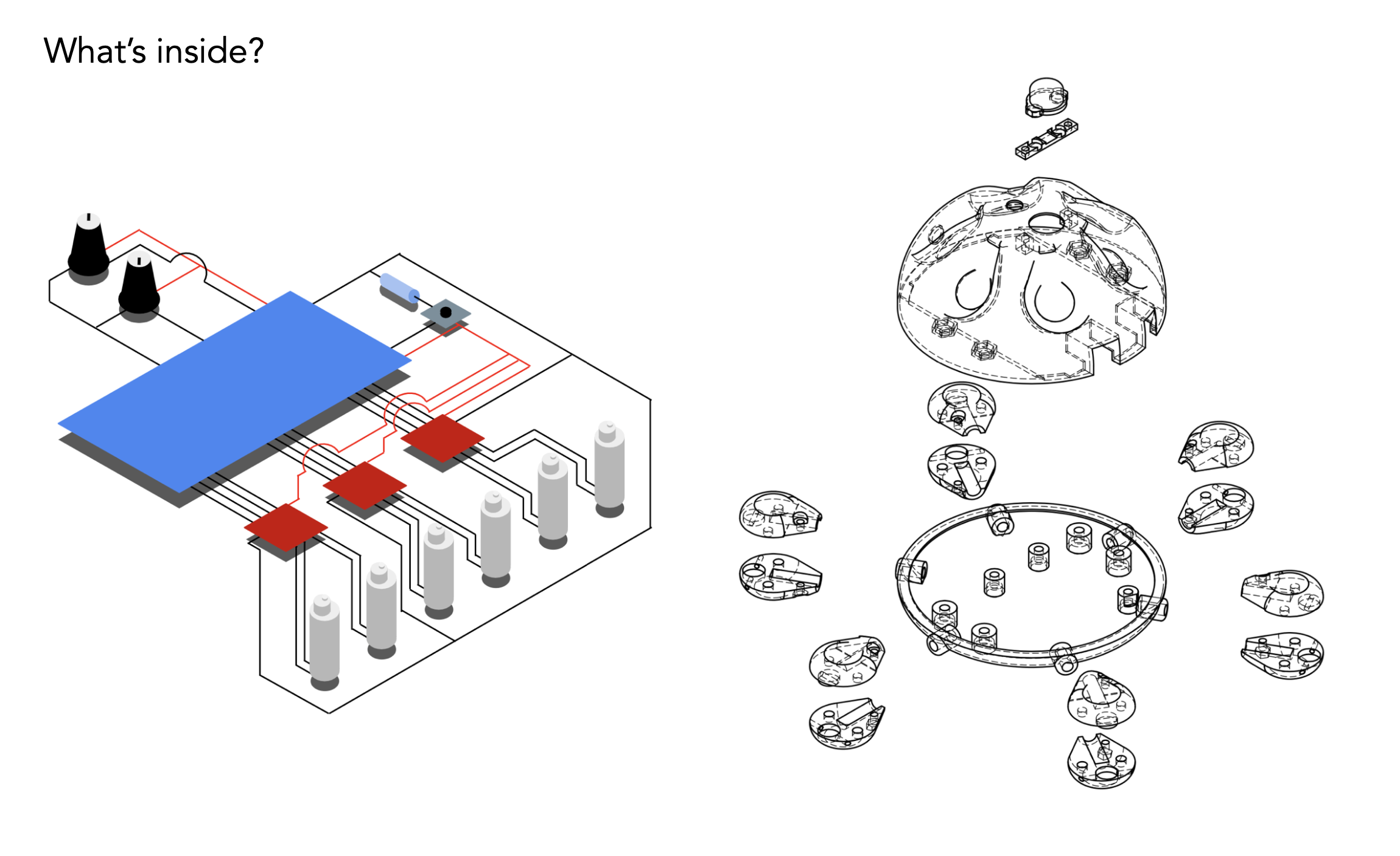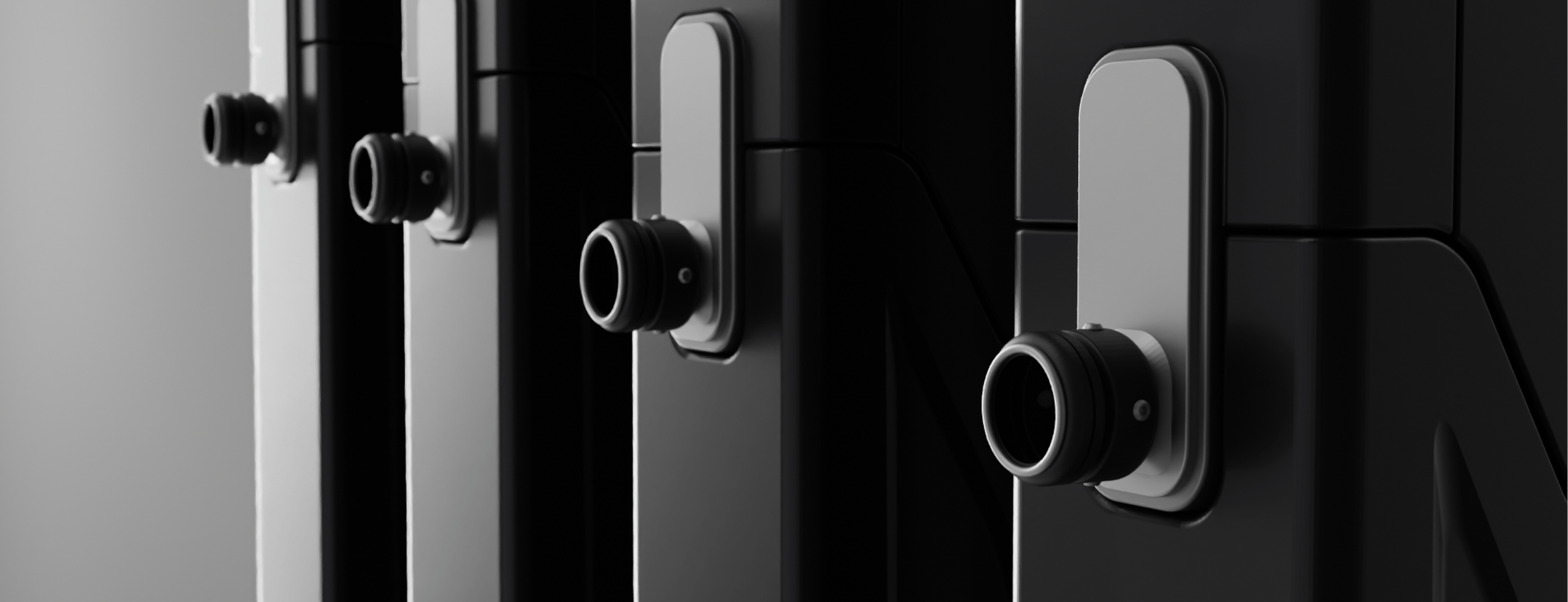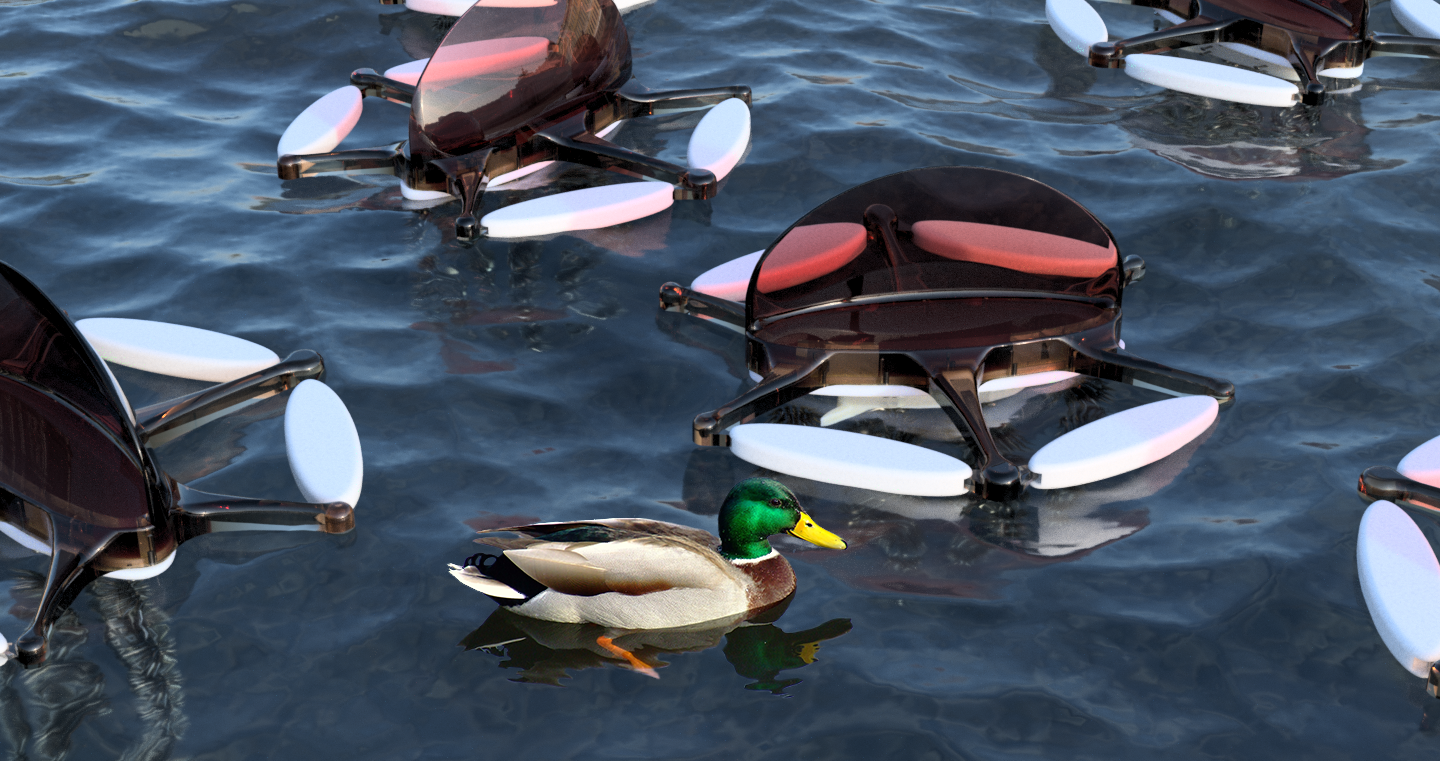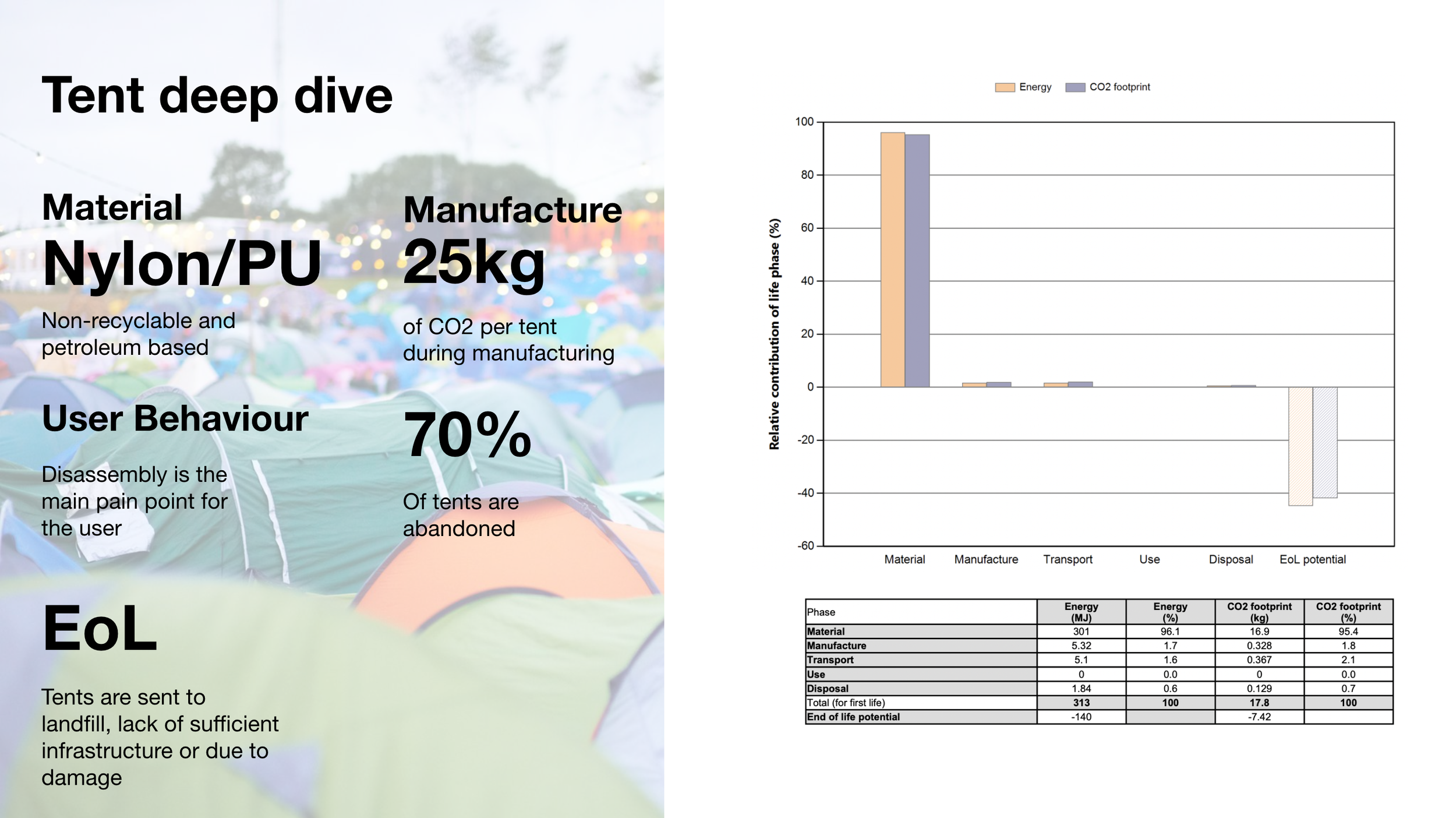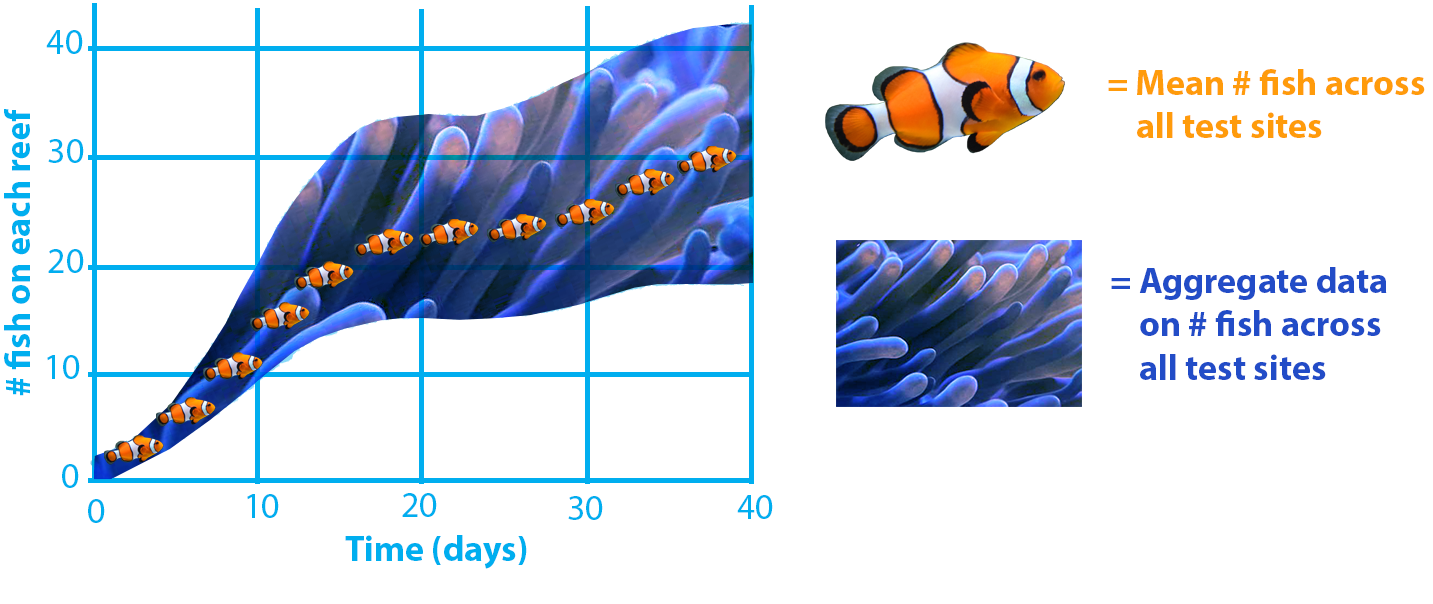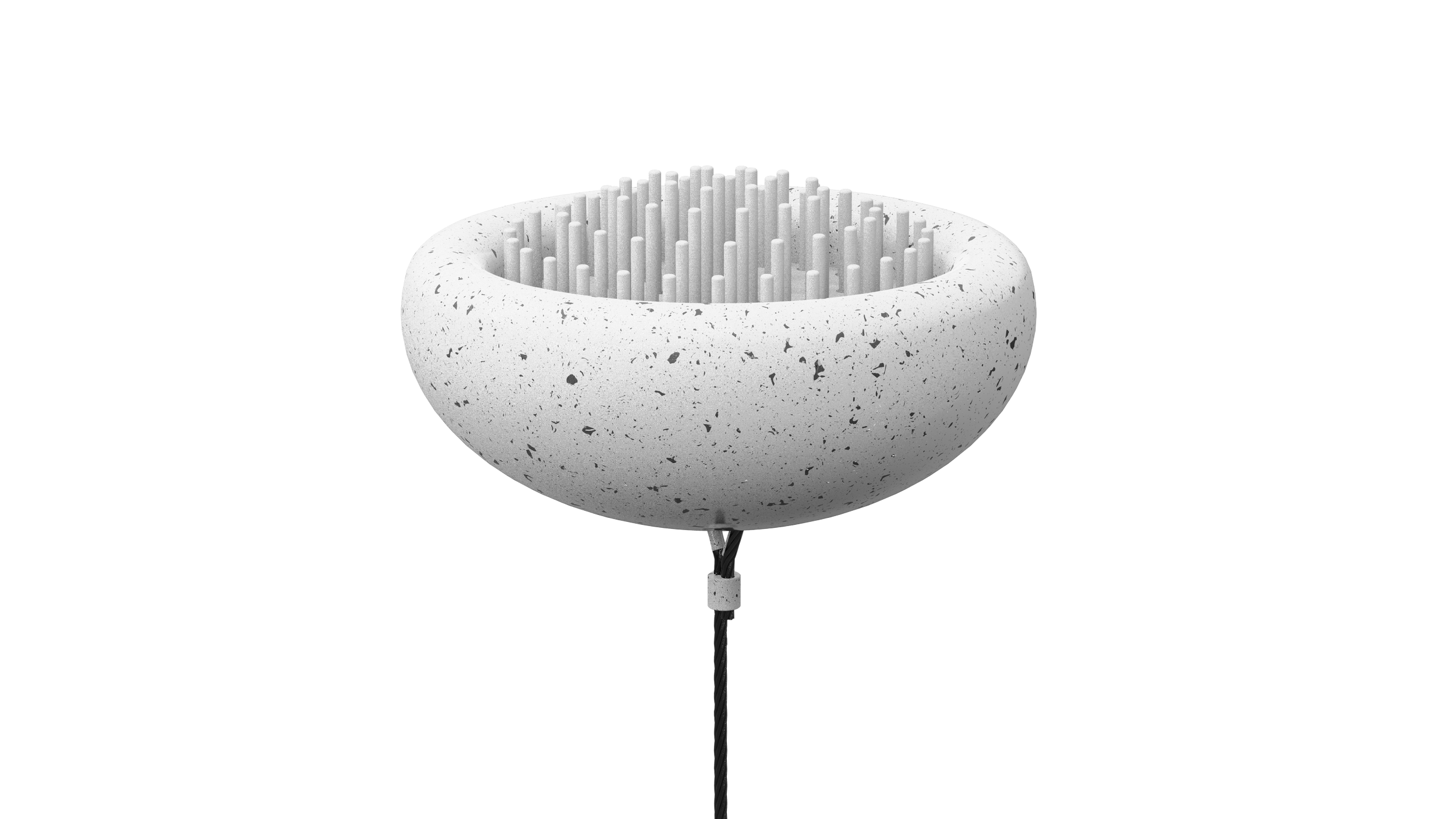Hi!
Welcome, have a look around :)
Below are some of my Engineering & Design projects, including videos to show them in action.
Look out for:
rapid prototyping, mechanical design, electronics, fluid mechanics, pollution mitigation, lifecycle analysis, ecosystem conservation concepts, interaction design, kinetic sculptures
(2021-22)
My role:
Mechanical design, CAD drawings, rapid experimental prototyping, manufacturing circuits, circuit diagrams, basic programming, manufacturing final parts, assembly
Scorpion Is Dog (SID)
Tools & techniques:
Fusion 360, 3D printing, electronics & soldering, C++
(6 week project - Steph Jump, Henry Parkin)
Scorpion Is Dog (SID) is a bluetooth controlled hexapod robot with over 12 programmable functions, including walking, waving, stinging, kissing, and dancing.
Watch the advert-style video (left) to see SID in action!
Chime
(2023)
Chime is a socially engaged numbers game for training working memory in macular degeneration* support groups. It makes the therapeutic benefits of music accessible to visually impaired non-musicians via a dynamic alternative to Braille notation. Gameplay is adapted from bellringing methods – where music is generated through a process of sounding mathematical permutations.
Chime is inspired by my Grandad’s experience with macular degeneration, and is a collaboration with him and other members of the Macular Society.
Watch the video (bottom right) to see gameplay in the Kensington Macular Support Group! (video plays at x2 speed)
* macular degeneration is the leading cause of irreversible blindness
My role:
Primary research, mechanical design, CAD drawings, rapid experimental prototyping, programming, manufacturing final parts, manufacturing circuits, circuit diagrams, assembly, user testing & validation
Tools & techniques:
Design thinking, user ethnography, Fusion 360, 3D printing, electronics & soldering, C++
(6 month project - Henry Parkin)
Guerrilla
(2022-23)
Winner - Mayor’s Entrepreneur Awards 2023 Winner - Imperial Enterprise Lab WeInnovate 2023Guerrilla is a gravity-powered high-flow liquid treatment device. It has been designed for removal of particulate pollution from urban road runoff.
(6 month project - Summer Chen, Hunaid Nagaria, Adhesh Shenoy, and Henry Parkin)
30% of all ocean pollution is mobilised by urban surface water runoff.
Guerrilla is a retrofittable device enabling roadside drains to capture particulate pollution, which would otherwise be washed into the ocean due to rainfall in cities.
It extracts contaminants passively using no membranes, moving parts or electricity and operates at high flow rates and high efficiency, while fitting into the current maintenance regime. The modularity of Guerrilla enables versatile configurations, making it deployable to differently sized roadside drains at any desired scale.
Check out the video (bottom left) to see a demonstration!
My role:
Rapid experimental prototyping, hydrocyclone design, basic CFD simulations, CAD drawings, manufacturing parts, fabricating assemblies, assembling test rigs for evaluation, quantifying efficacy
Tools & techniques:
Design thinking, optical microscopy, computational fluid dynamics (SimScale), Fusion 360, 3D printing, workshop fabrication, liquid sealing
This machine is made from parts manufactured using my Ender 3 and hardware ordered off the internet. It is my first from-scratch CNC build and I’ve really enjoyed de-bugging and tinkering with it.
DIY CNC Drawing Machine
(2023)
Tools & techniques:
3D printing, Electronics & soldering, C++, GRBL, Adobe Illustrator, Vector2GCode, Universal GCode Sender
(1 day build after many weekends of research - Henry Parkin)
Spherical Parallel Manipulator
This machine is inspired by universal joint mechanisms. It is made almost entirely from parts printed on my Ender 3.
(2023)
(Weekend project - Henry Parkin)
Tools & techniques:
Fusion 360, 3D printing, electronics & soldering, C++
Xellyfish
(2021)
(2 month project - Steph Jump, Eve Townsend, Henry Parkin)
Xellyfish is a creature-like device designed to sail around, extracting microplastics from fish farms and reservoirs of drinking water. It extracts microplastics using ferrofluid tentacles which act like fly-paper for microplastics due to weak, non-polar Van Der Waals forces. These tentacles were developed through an iterative process of prototyping and testing.
In concept, Xellyfish are designed to be reproducible using the plastic waste that they collect - although this warrants a specialised coating (as yet developed) to prevent erosion from creating more microplastics.
Watch the video (below) to see the concept explained!
My role:
Product rendering, rapid experimental prototyping, manufacturing parts, fabricating assemblies, quantifying efficacy, business model design
Tools & techniques:
Systems thinking, Lean Business Model Canvas, Fusion 360, 3D printing, workshop fabrication, Adobe Photoshop, Microsoft Excel
Runner up - Terra Carta Design Lab Awards 2022 Runner up - Mayor’s Entrepreneur Awards 2022 Quantifying removal of plastic particles from water using ferrofluid
(1 month project - Henry Parkin)
These experiments took the tentacle concept from Xellyfish further, to see how efficiently a ferrofluid assisted device could extract plastic particles from water, so I created a pipe module for testing.
Tests showed an encouraging 82% efficacy but also very high maintenance requirements for ferrofluid in this application, making scalability an issue.
(2022)
My role:
Rapid experimental prototyping, assembling test rigs for evaluation, quantifying efficacy
Tools & techniques:
Lab experimentation, Fusion 360, 3D printing, Microsoft Excel
Material-service systems
(2022)
(1 month project - Eve Townsend, Hunaid Nagaria, Jingyan Chen, and Henry Parkin)
Material-service systems are a radical economic/ownership proposal to enable more efficient material re-use and recycling.
Product-service systems such as ride shares for cars and bikes mean that consumers use resources more efficiently by sharing them. The concept of ‘material-service systems’ extends resource sharing to the raw material itself, proposing that material suppliers lease their material to manufacturers for a given time.
Leasing material incentivises the suppliers to provide longer lasting, higher quality material. It also incentivises manufacturers to design using fewer materials, for better longevity, and for easy disassembly because they must return the material in due time. By returning used resources like so, materials can be recycled more efficiently because exact material composition is better understood - leading to less deterioration of high-grade material in the recycling process.
During our material circularity module at Imperial, we developed a concept for the re-use of abandoned festival tent material to make new, modularised tents. I became really excited about the idea of material-service systems, and was asked to help the lecturers produce a video describing the concept for their article.
Click this link for the article and our explainer video on material-service systems!
My role:
Eco-Audit, Circularity Analysis, rapid prototyping, business model design
Tools & techniques:
ANSYS Eco-Audit analysis, FlowMapper Circularity Analysis, origami, Adobe AfterEffects
Reef Bells
(2022)
Winner - RCA x Logitech Grand Challenge 2022Reef Bells are analogue instruments designed to be played by the ocean current on coral reefs.
Tuned to mimic the percussive crackling sound of a healthy reef, Reef Bells act as an aural navigation tool for baby reef fish, which spawn in open water and navigate to coral reefs by listening for the sounds made by the animals which inhabit them.
Reef Bells provide an energy-free toolkit for acoustic enrichment without using speakers and are designed for longevity – once they stop making useful sound, the bio-composite ceramic which they’re made from provides ample substrate for the growth of new life.
(1 month project - Joon Hyung Park, Zoe Xiong, Xiaowei Fang, and Zifan Zhang, Henry Parkin)
My role:
Ecosystems interaction research, audio engineering, systems design, product rendering
Tools & techniques:
Logic pro, Fusion 360, Adobe Photoshop
[untitled] installation
Art
Electronics
(2021)
I made this art installation for a group show at ArtSect gallery in Clapton, shortly after lockdown ended. The aim was to engage visitors in a curious encounter.
These videos are real-time and are not sped up. I achieved the gyrating effect by attaching unbalanced motors to the base of the plants’ stems.
(If this video appears frozen, try refreshing the page!)
This is a diorama depicting a landscape moving and changing over geological time. I made this by building a custom speaker rig in order to manipulate particles inside a petri dish using sound waves.
Landscape
Sculpture
Sound Design
Electronics







